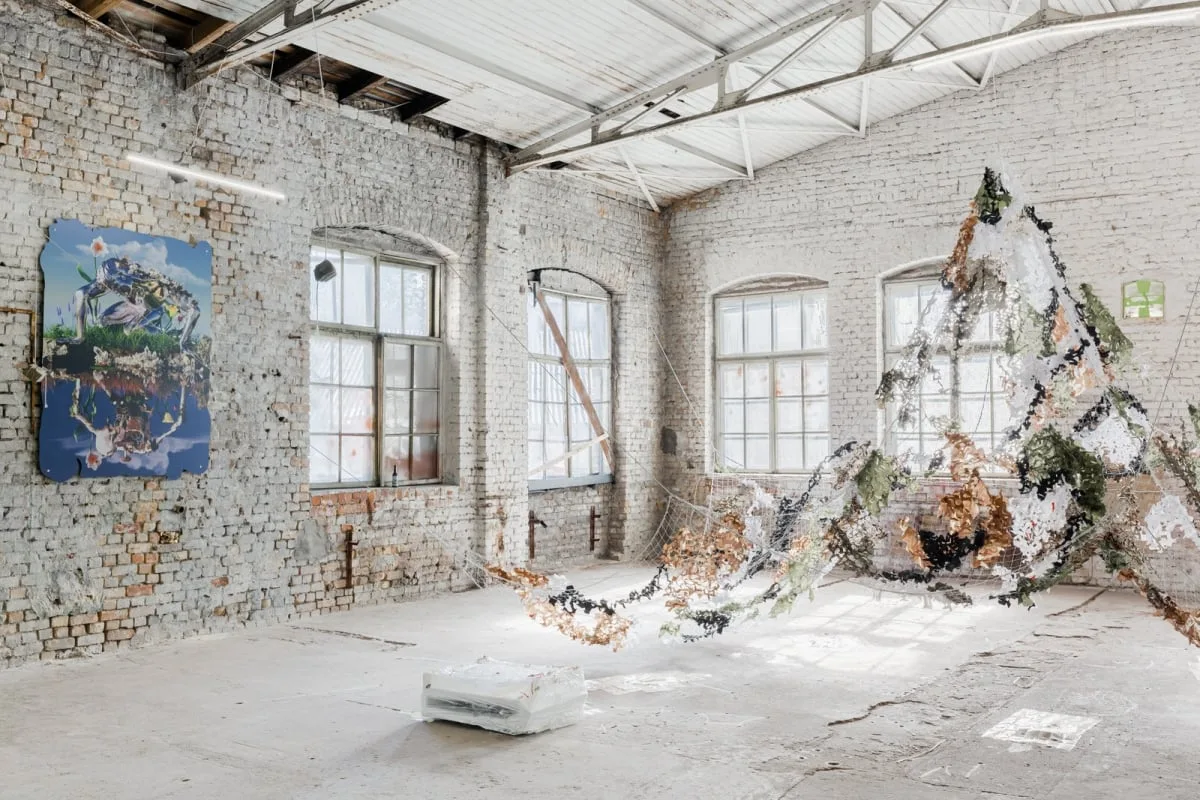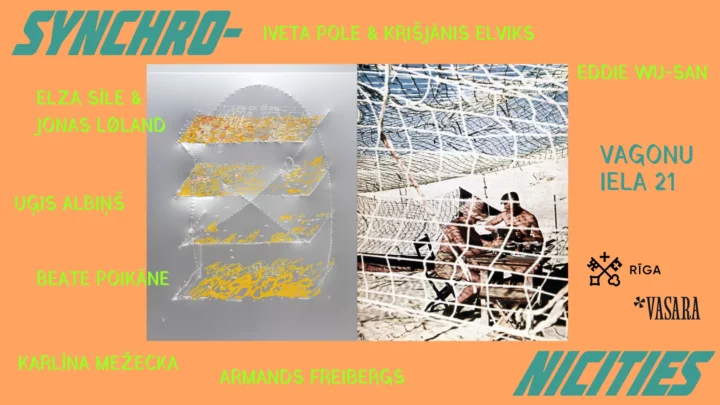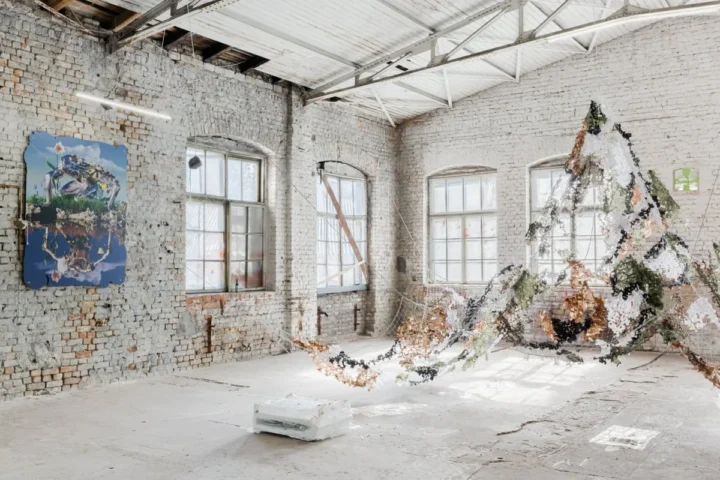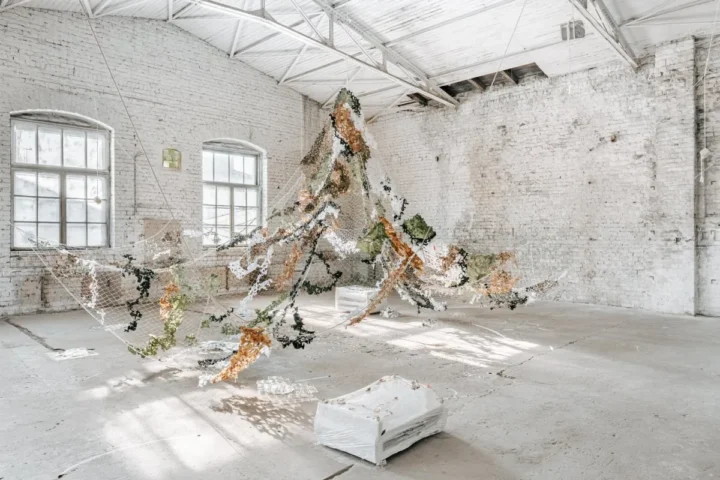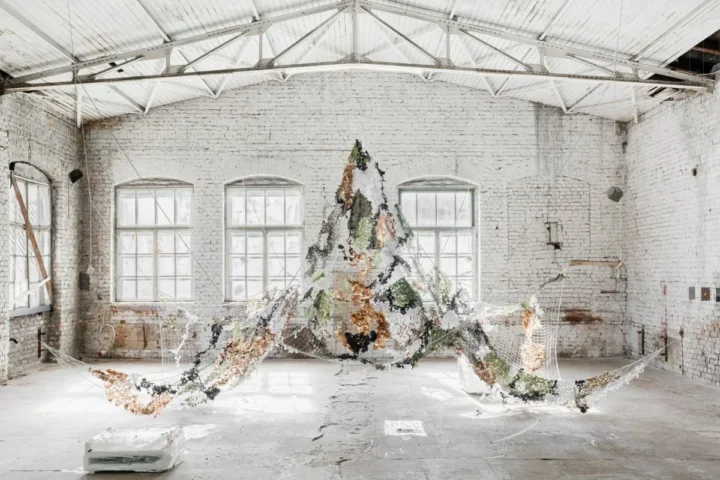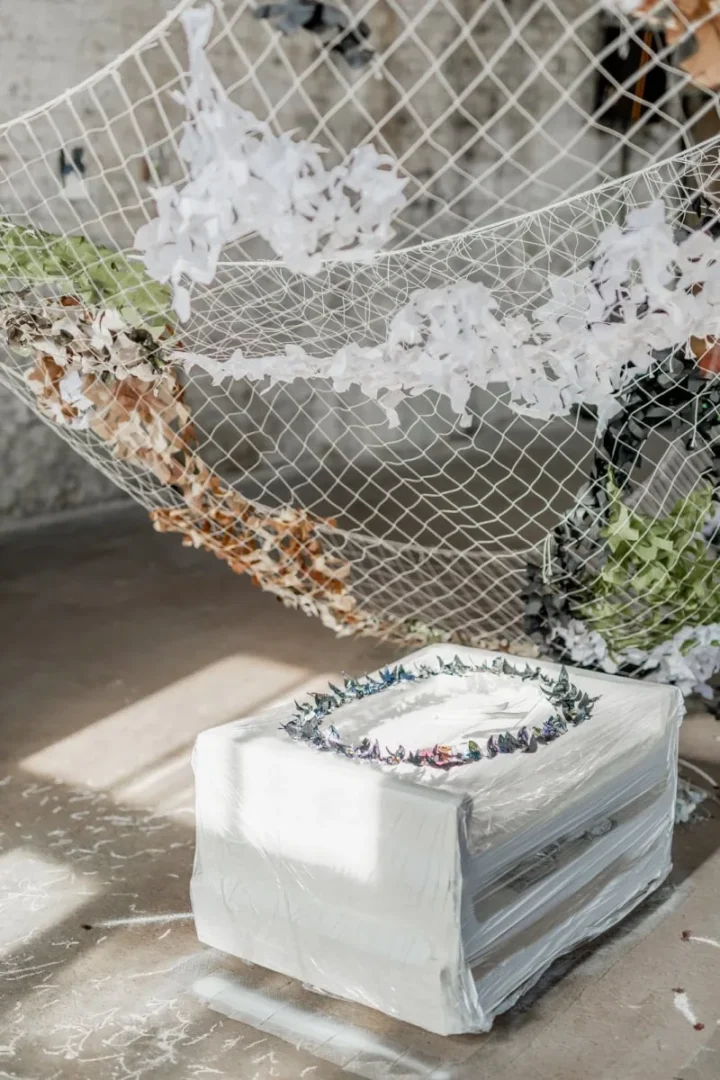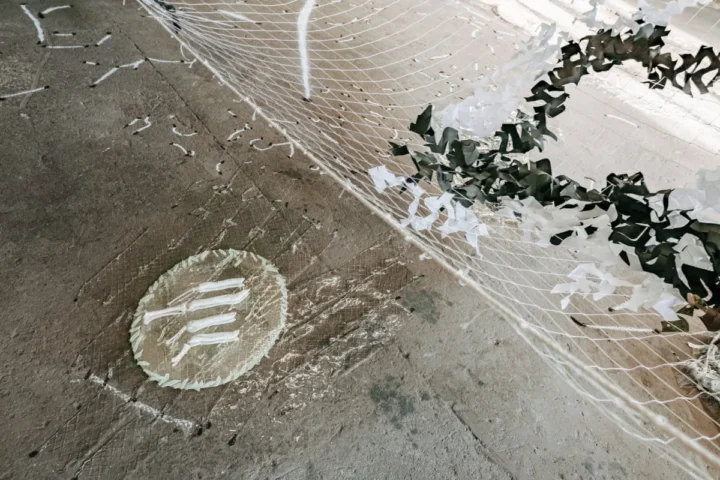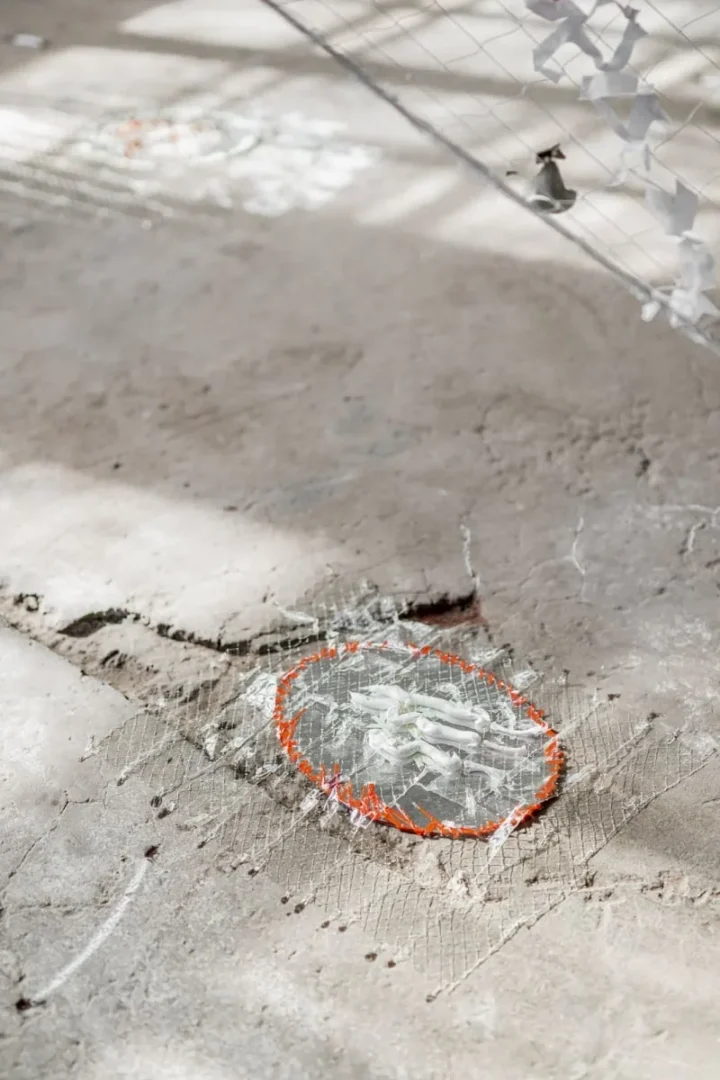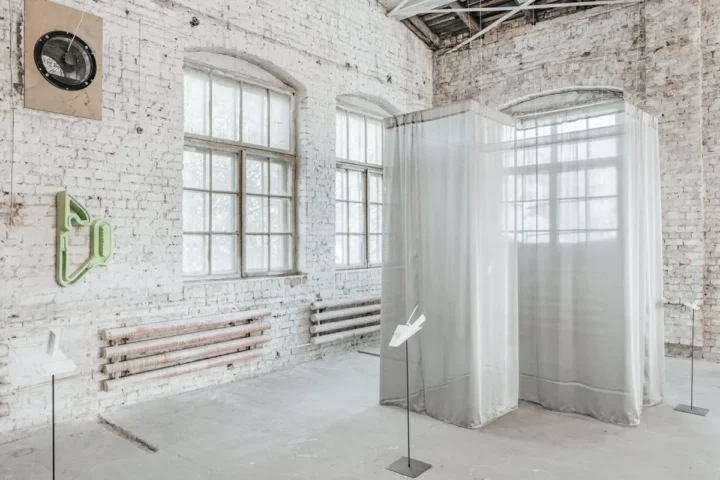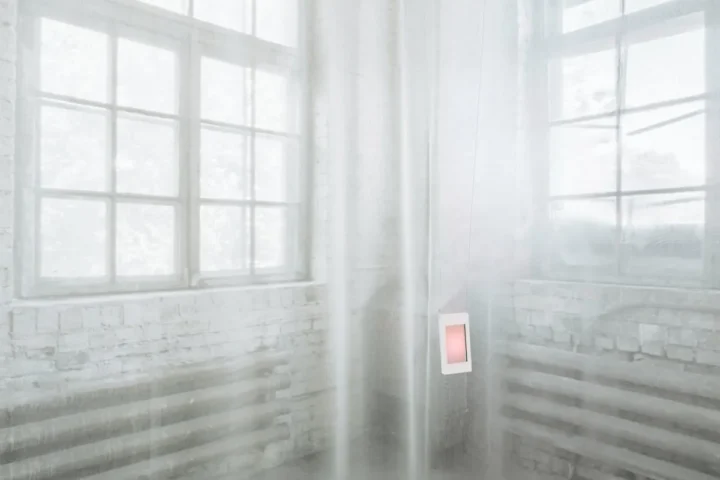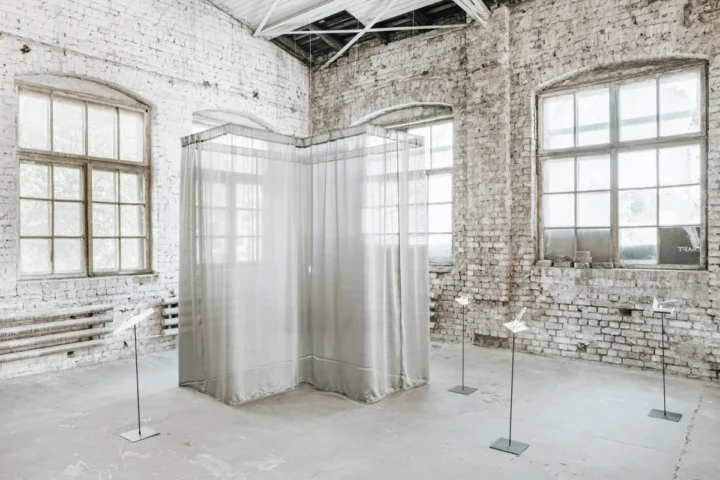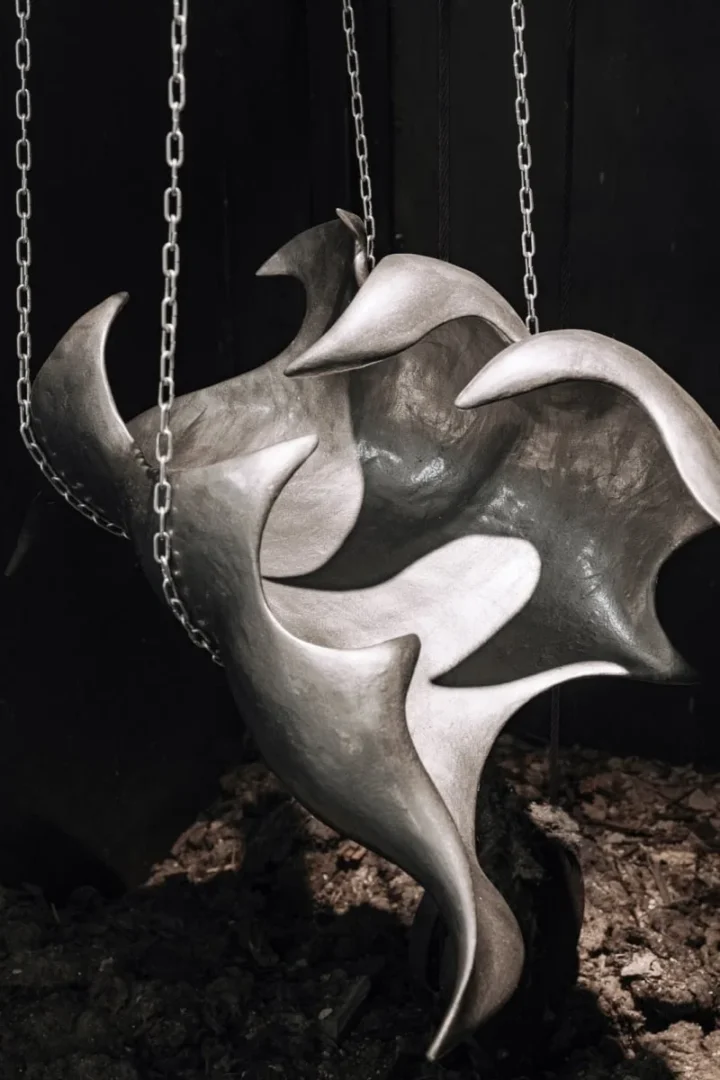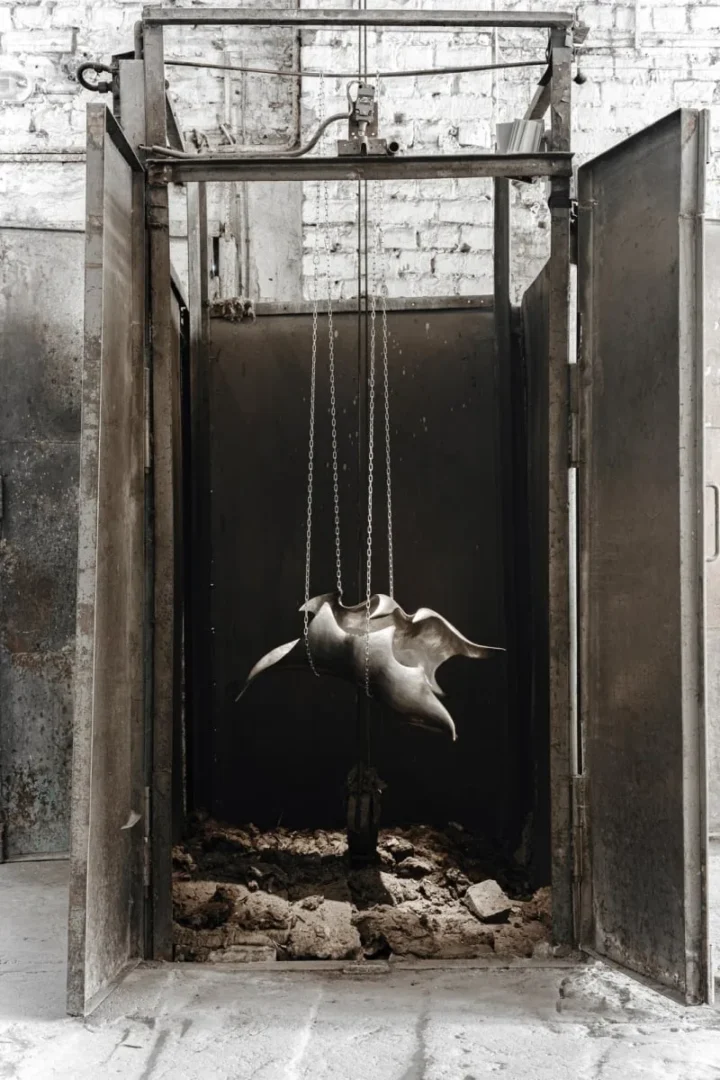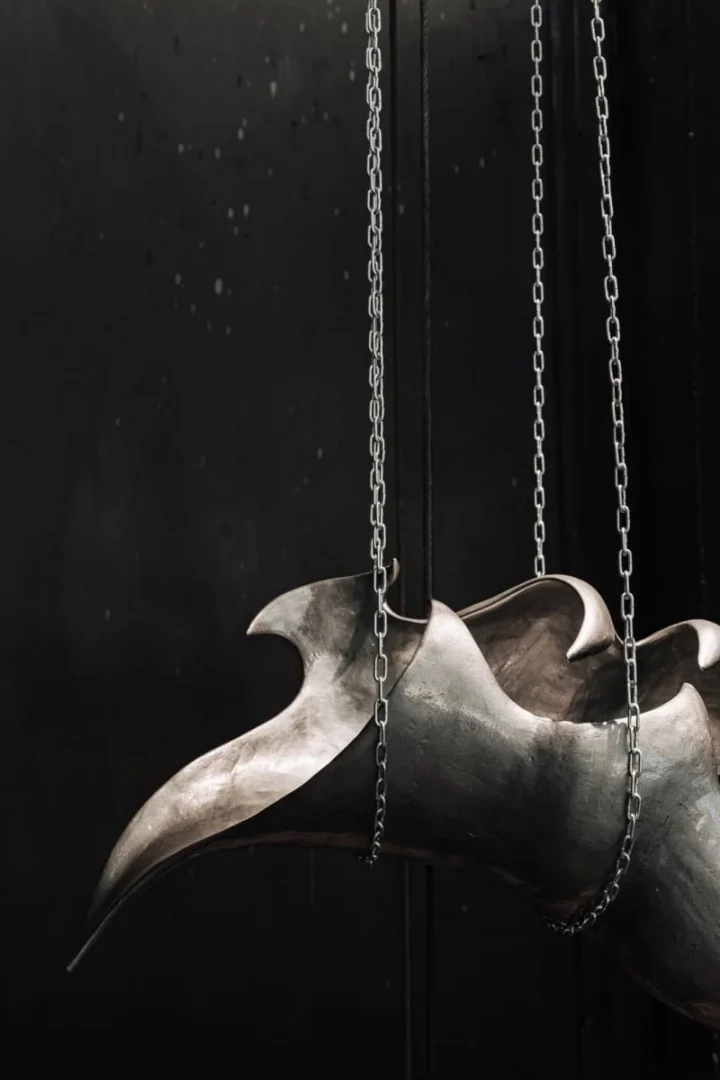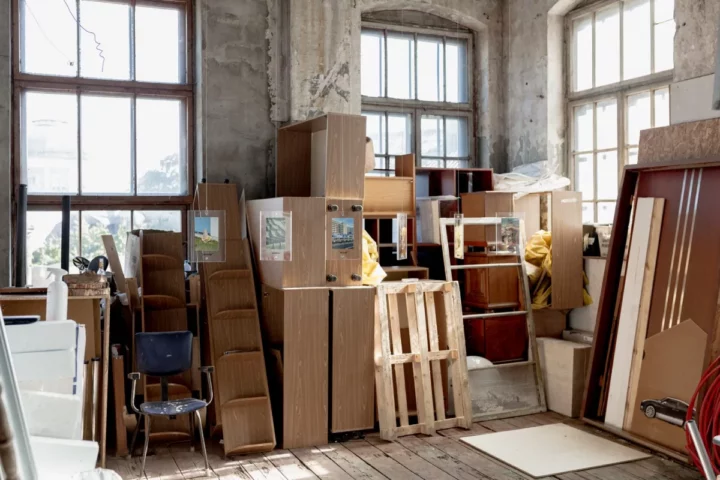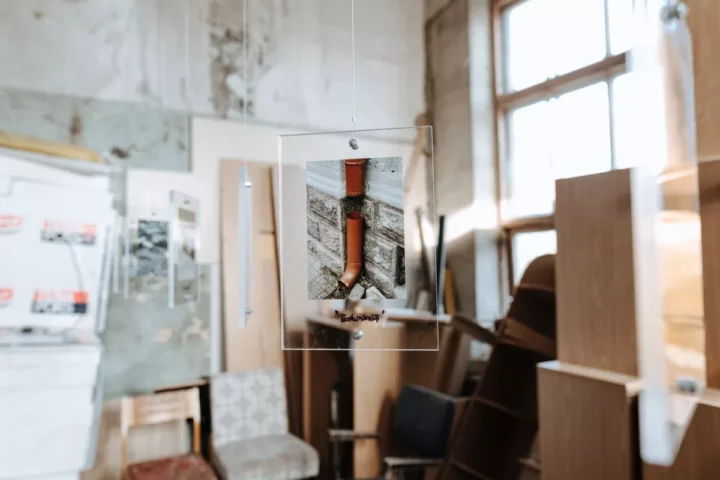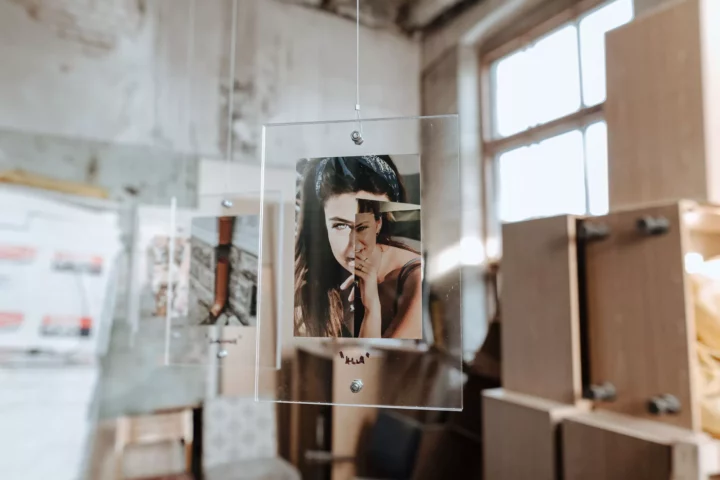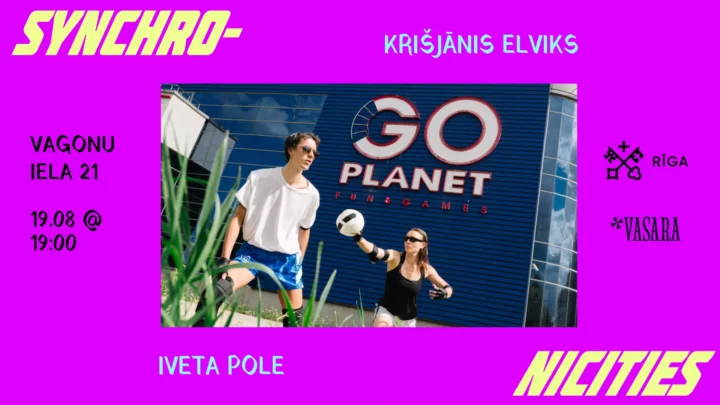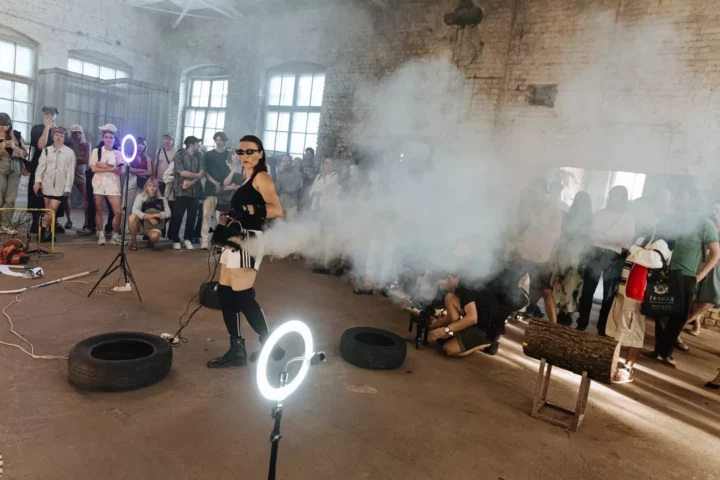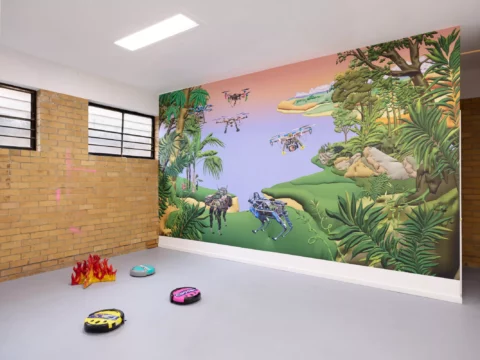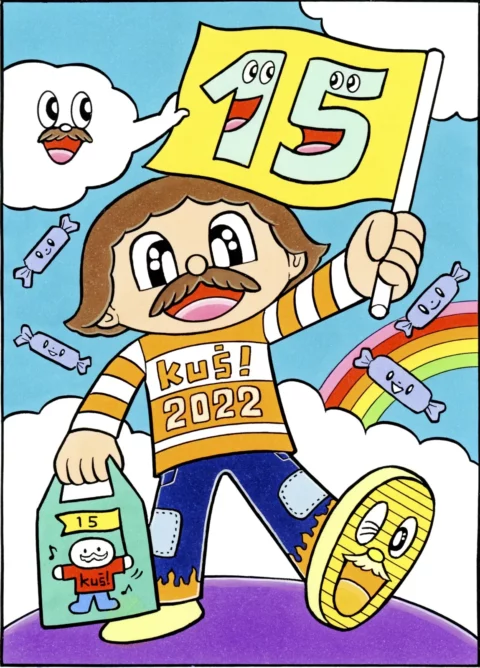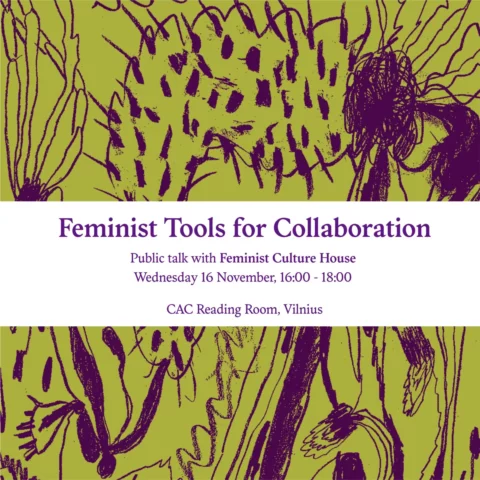SYNCHRONICITIES
05.08.2022, Opening 18:00
Participants: Uģis Albiņš, Armands Freibergs, Karlīna Mežecka, Iveta Pole & Krišjānis Elviks, Beate Poikāne, Elza Sīle & Jonas Løland, Eddie Wu-San
Curated by Žanete Liekīte
When two seemingly inter-connected coincidences appear without a visible causal link, it’s been said that some sort of a miracle has been faced, also known as ‘synchronicity’. The term’s original meaning unfolds as somewhat pseudo-philosophically superstitious, but if one thinks about it literally, the ‘synchronicities’ seem almost too obvious. Clearly there are many amusingly or chillingly matching occurrences taking part at the very same time, and most of the time one has no clue about the connection or the very knowledge of the happenings.
The group exhibition Synchronicities is a contemporary hybrid flirting with art, performance, design and architecture, an attempt at sorting out the clash between trendy spiritual awakening versus a more genuine kind of awareness and wokeness. To partly maintain the originally mystical undertone of the term, the ‘synchronicities’ of this show are both intuitive and ambivalent, communicating through a ‘gut feeling’.
The exhibition is part of Riga’s Summer Culture programme and is supported by Riga City Council / Rīgas dome.
෴
Enigmatic waves of seriality are curving over the surface of the earth. While syncing objects into mysterious sequences, these waves are creating seemingly intertwined coincidences without a visible causal link. In these moments the so-called small-scale miracles occur, also known as “synchronicities”. In the essay with the same title K.G. Jung mentions an occasion when a patient was recalling a dream about a necklace adorned with a pendant of a golden scarab. At that moment he was distracted by something softly scuffling by the window, which turned out to be a dung beetle with a greenish-golden shell – the closest possible insect to a scarab in these latitudes.
Collecting coincidences also was a passion of the controversial biologist Paul Kammerer. The principle of what he called “serialities” are based on an unexplored, magnetic force of the macrocosm, striving to replicate, group and unify. However, J.P. Sartre’s understanding of ‘seriality’ is something rather divergent. Accordingly, it is a distinct characteristic of capitalism, which manifests itself as collective inertia. Meanwhile, the original meaning of ‘synchronicity’ unfolds as somewhat superstitious, but if one thinks about it literally, it also seems obvious. Clearly there are many matching occurrences happening simultaneously. These events are untraceable, and it is certainly impossible to determine their ripple-effect. Infinite amounts of information filtered through inevitably selective processing can make the external image of the world fragmentary and ephemeral. Yet with an infinite number of variations and a wide range of interpretations, they do not eliminate the possibility that we do live in a network.
The seeming binarism and principle of non-causal relation lies in aesthetic codes and toys with perceptual experience. Casting webs, falling into traps and collecting coincidences is not only a passion of disputable scientists, it’s also an old trick used by artists that urges to group visual impressions associatively and allows representation to wrestle with its perception. To partly maintain the term’s original mystical undertone, the ambivalent ‘synchronicities’ of this show are not only perceptible with active sight, but also with your ‘gut feeling’.
Author: Žanete Liekīte
Uģis Albiņš’ ‘Before Never’ are embodying the potential of irreversible movements. By deconstructing the created mechanisms, the components of the object become symbolic. However, the essence of each object is abstract and infinite, inviting the viewer to perceive them candidly.
Armands Freibergs draws from the visual strategies of classical painting and contemporary graphic design. His 3D digital painting is re-interpreting the modern day digital ‘Narcissus’, who gets distracted by its distorted optical image, inevitably drowning in the universe of binary codes.
Karlīna Mežecka’s ‘Wail’ refers to the notion that the depths of our oceans are a larger mystery to man than outer space. Toying with the meaning and phonetics of the word, ‘Wail’ reveals vaguely zoomorphic shapes, captured in a state between familiar and alien.
Elza Sile’s & Jonas Løland’s ambiguous “Garden Party” is revealing a syncing web between civilian leisure activities, animal traps and military techniques. With help of neatly applied associative visual strategies and ciphers, the installation is reminiscent of censorship and hiding in plain sight.
Beate Poikāne’s ‘Solo Walker Riga’ is displaying a psycho-geographical reconstruction of personal memory. Meanwhile seeking connections between Riga cityscapes and critical psychological states, the artist has found a resemblance in efforts of depicting a memory and attempting to write down a dream. Montage of the narrative depends on the viewer’s chosen itinerary.
Iveta Pole’s & Krišjānis Elviks’ ‘Go Planet’ performance in collaboration with Jana Jacuka reminds us of the digital reality in which 60’s videos become the prime source of information – giving everyone the same odds of becoming a guru. The shared mix of images and fragmentary videos flow through users’ minds, forming strange neo-tribes whose members may not even realize they have joined the community.
